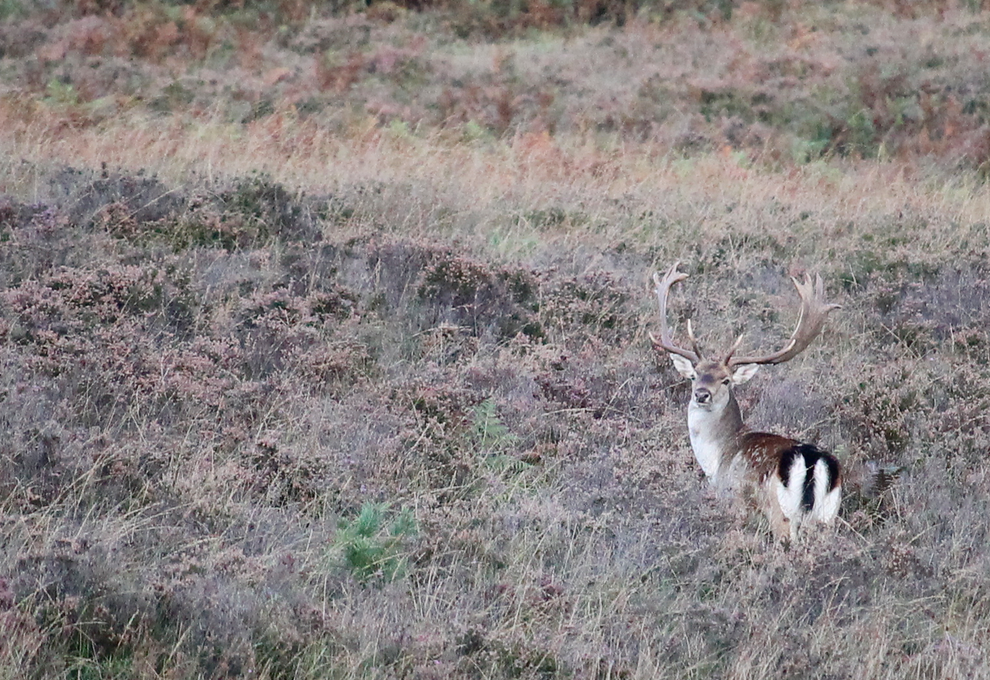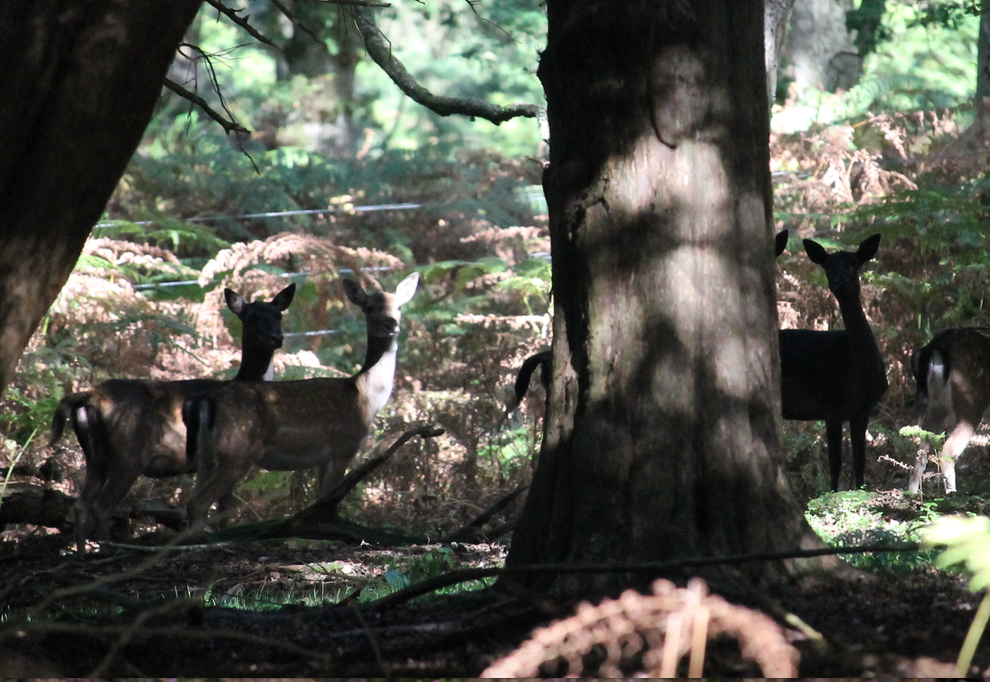
The fallow deer rutting season runs from September to October.
The autumn months in the New Forest herald the breeding activity of fallow deer (Dama dama). The rutting season begins in September and peaks in late October. As the foliage changes colour into the russets, oranges and yellows of late autumn, if you are quiet and listen intently, the sounds of amorous male fallow deer can often be heard across the Forest. With pannage season underway you would be forgiven for thinking that what you had perceived was the sound of a porker snorting to its piggy-friends. This is because the call of the fallow buck is a cross between a grunt and a belch, given in quick succession, that is used to attract mates and challenge other males. Bucks will protect a territory, known as a stand, into which they will attempt to entice does and form a harem. Upon hearing the sound of rutting deer any dogs accompanying you should immediately be put on their leads, if they aren’t already, and ideally you will vacate the area as quickly and quietly as possible to avoid alarming the deer. It is important to protect these animals from undue stress at this time, as any disturbance may affect their breeding success.
Naturalised species
The fallow deer is the most commonly encountered of the six deer species that freely roam the British countryside. The New Forest has a fallow population of about 1,300 deer that are monitored by the Forestry Commission. Outside of the rutting season fallow deer roam in single sex herds of either bucks or does. When the males reach maturity, at about 18 months old, they will leave the doe herd and join a bachelor herd. Fully-grown bucks grow to a height of 94cm (approximately 3ft) at the shoulder and can weigh up to 93kg (approximately 205 pounds). From the age of three to four they grow ‘palmate’ antlers (just look at the palm of your hand with fingers outstretched to see what that means), which can reach up to 70 cm (27 inches) in length. During the summer months their coat is generally a chestnut colour with white mottles, which deepens to a darker, unspotted pelt in the winter. Other variants of coat colour also exist, which range from almost black to white, but these are not as common. Even though they are a familiar sight in the countryside, fallow deer are not a native British species. The Romans first introduced fallow deer shortly after their conquest of Britain in 43AD. The deer were kept in specially designated parks, called ‘vivarium’. When the Roman Empire collapsed and Roman rule in Britain ended, fallow deer became extinct in this country. However, William the Conqueror, who also created the New Forest, reintroduced fallow deer in the 11th century and the descendants of these animals became naturalised and have remained part of our countryside ever since.

Avoid disturbing deer, as stress during the rut can affect breeding success.
Sources:
You Tube documentary: Dama – The Deer That Walked the World, https://www.youtube.com/watch?v=6aagY-9wdtk&feature=youtu.be
You Tube sound clip of fallow bucks: https://www.youtube.com/watch?v=75LkMg5C1ks
Dama International – The Fallow Deer Project: http://www.nottingham.ac.uk/archaeology/research/bioarchaeology/zooarchaeology/fallow-deer.aspx
British Deer Society: http://www.bds.org.uk/index.php/documents/deer-species/14-fallow-deer-identification-leaflet/file
Forestry Commission: http://www.forestry.gov.uk/forestry/fallowdeer
New Forest National Park Authority: http://www.newforestnpa.gov.uk/info/20090/wildlife/146/deer/5
Stag Antlers: http://stagantlers.co.uk/deer-antlers-home/fallow-deer/


You must be logged in to post a comment.